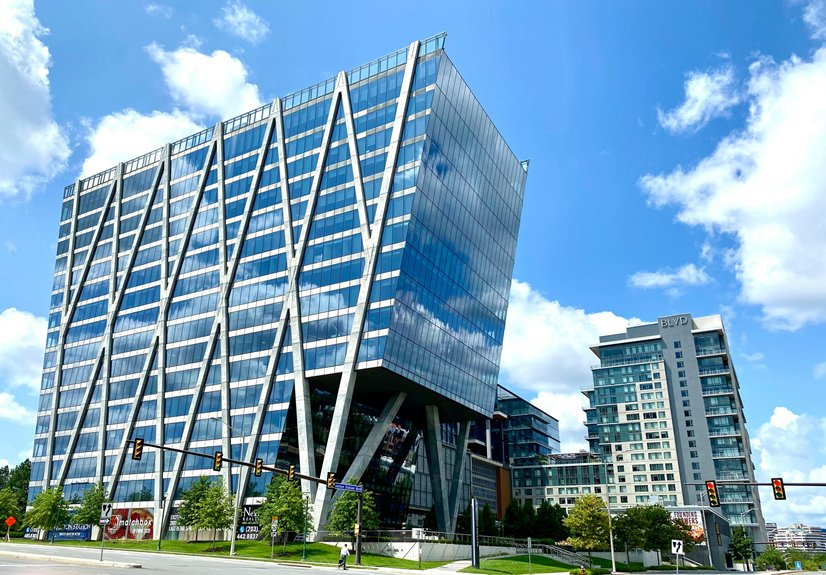The Hidden Costs of Neglecting Business Architecture
You'll likely incur significant financial and operational costs when you neglect your business architecture, as hidden expenses from maintenance, technical debt, and performance degradation add up quickly. Neglecting maintenance can result in budget overruns, performance issues, and security vulnerabilities, ultimately affecting your bottom line. You'll face increased operational costs, troubleshooting, and fixing issues, which consume valuable resources and time. As you explore the impact of neglecting business architecture, you'll discover more about the consequences of technical debt, security risks, and compatibility issues, and how they can be mitigated to guarantee business success.
Financial Implications
How much will neglecting business architecture really cost you? You'll likely face hidden costs, including maintenance costs, due to the accumulation of technical debt. Neglecting business architecture can lead to financial mismanagement, resulting in budget overruns and increased expenses. For instance, a European bank experienced budget overruns of up to 50% due to unclear scope and ineffective resource allocation. You may think you're saving money in the short term, but you'll pay more in the long run, with ongoing maintenance costs complicating future updates and driving up operational expenses.
You'll need to evaluate the financial implications of neglecting business architecture, including the potential for significant cost overruns, as seen in federal government projects, which reported average cost overruns of 25% above budget estimates. British Airways' 2017 IT outage, which resulted in an £80 million loss, is another example of the financial consequences of neglecting business architecture. By understanding these financial implications, you can make informed decisions about your business and avoid costly mistakes.
Operational Inefficiencies
Neglecting business architecture can lead to operational inefficiencies, resulting in delays and increased costs due to unclear scope and mismanagement of resources. You'll encounter hidden expenses, such as maintenance costs, which can quickly add up and impact your bottom line. Inefficient systems and processes can create performance bottlenecks, slowing down operations and preventing timely responses to market changes. This, in turn, can lead to decreased productivity and higher costs. As you struggle to keep up with demand, you may incur additional costs, including overtime and temporary staffing. Additionally, neglecting business architecture can lead to technical debt, which complicates future updates and enhancements, resulting in higher long-term operational costs. By understanding the causes of operational inefficiencies, you can take steps to address them, reducing costs and improving overall business performance. Regular audits and assessments can help identify areas for optimization, ultimately impacting your business's competitiveness and profitability.
Technical Debt Accumulation
You're likely to encounter debt accumulation and code complexity as you assess your organization's technical infrastructure, and it's essential to understand how these issues can impact your business's scalability and operational efficiency. As you examine your systems, you'll find that delaying necessary updates and maintenance can lead to increased technical debt, complicating future updates and requiring ongoing fixes and patches that incur additional costs. You should consider regular audits and assessments to identify and address technical debt, including code complexity, before it escalates, preventing costly rework and ensuring peak performance of your technology infrastructures.
Debt Accumulation
Technical debt accumulation is a time bomb that can devastate a company's bottom line, and it occurs when essential updates and architectural decisions are postponed, leading to increased complexity and higher long-term costs for your business. This can result in significant cost increases, as technical debt can account for up to 20% of a project's total cost, and maintenance costs can escalate over time, potentially exceeding initial investment costs by 50%. You may face operational inefficiencies, which can hinder your competitive edge in the market, with studies showing that companies with high levels of technical debt experience a 30% slower speed in delivering new features and functionalities. Ignoring architecture standards can lead to poorly designed systems, requiring frequent fixes and patches, which may require up to 25% of development resources to manage ongoing technical debt. By neglecting business architecture, you risk incurring substantial technical debt, which can have severe consequences for your business.
Code Complexity
Code complexity is a major contributor to technical debt accumulation, and it's a problem that can sneak up on your business if you don't prioritize architectural planning. You'll end up paying more in maintenance and support, with estimates suggesting up to 30% more for poorly structured code. This can lead to operational disruptions, with 60% of companies reporting significant downtime due to code complexity issues.
You should be aware that technical debt can escalate quickly, potentially consuming 20% to 40% of your IT budgets annually, just to address legacy code issues. Systems developed without proper planning require frequent updates and patches, increasing development time by 25% due to complexity. As a result, you may experience delays, budget overruns, and lost revenue opportunities, straining your resources. By understanding the impact of code complexity on technical debt, you can take proactive steps to mitigate these risks and optimize your IT budgets.
Security Vulnerabilities
Neglecting business architecture can expose anyone to serious security threats, and it's crucial that businesses don't underestimate the risks. You must implement robust security measures to safeguard your business operations and protect customer trust. A data breach can be devastating, resulting in significant financial losses and damage to your brand reputation. Regular updates and security patches are essential to mitigate risks, as the cost of a breach far exceeds the cost of routine maintenance.
You can take the following steps to enhance security:
- Implement robust security architectures to prevent data breaches
- Conduct regular updates and security patches to stay ahead of threats
- Invest in employee training to guarantee awareness of security best practices
- Monitor business operations to quickly identify and respond to security incidents. By prioritizing security, you can minimize the risk of a data breach and protect your business from financial losses and reputational damage.
Performance Degradation
You're likely to experience performance degradation in your business applications if you don't prioritize maintenance, which can lead to issues like slow load times, and system failures, ultimately affecting user satisfaction. As you continue to neglect business architecture, you'll notice that slow load times can hinder productivity, and system failures can bring operations to a halt, resulting in significant losses. You should consider the impact of slow load times and system failures on your business, as these issues can drive customers away, and divert resources from improving functionality to fixing problems, which can be costly and time-consuming.
Slow Load
A company's bespoke applications can experience performance degradation over time, leading to slower load times and reduced user satisfaction, which will negatively impact your overall business productivity. This slow load can be a significant issue, as it can lead to performance issues that affect your user experience. You may notice that your application's performance degradation can result in increased operational costs, as you'll spend more time and resources troubleshooting and fixing issues.
Some key points to evaluate when dealing with slow load and performance issues include:
- Reduced conversions: a 1-second delay in page load time can lead to a 7% reduction in conversions
- Increased support calls: neglecting regular maintenance and updates can result in a 40% increase in support calls
- Customer complaints: prioritizing application performance management can achieve up to a 60% reduction in customer complaints
- Operational costs: performance degradation can lead to increased operational costs, with organizations spending up to 30% more on troubleshooting and fixing issues. By addressing slow load and performance issues, you can improve your business productivity and overall user experience through effective application performance management.
System Failures
System failures due to performance degradation can cripple your business, causing downtime that severely affects revenue and customer trust. You'll encounter hidden costs, including high employee turnover, as frustrated staff may leave due to poor working conditions. Performance issues can also hinder your ability to achieve business objectives, making it vital to address system failures promptly.
| Cause | Effect |
|---|---|
| Lack of maintenance | Performance degradation |
| Insufficient updates | System failures |
| Inadequate data management | Poor decision-making |
You must consider the impact of neglecting business architecture on your data, as system failures can lead to lost or corrupted information. Regular maintenance and updates are essential to prevent performance issues and guarantee peak system performance. By prioritizing business architecture, you can minimize the risk of system failures and maintain a competitive edge. This, in turn, will help you achieve your business objectives and reduce the risk of hidden costs associated with neglecting business architecture.
Compatibility Issues
Since outdated applications can encounter compatibility problems with updates, functionality failures that disrupt business operations may occur, and it's crucial to address these issues promptly. You'll want to evaluate the costs associated with neglecting compatibility issues, as they can lead to poor customer satisfaction and potential loss of revenue. Compatibility problems often become more costly over time, requiring a significant investment in retrofitting or replacing outdated systems.
To maintain peak application performance, you should:
- Regularly update your technology to guarantee seamless integration with operating systems and browsers
- Invest in compatibility testing to identify potential issues before they occur
- Prioritize customer satisfaction by providing smooth and reliable interactions with your technology
- Allocate resources to address compatibility problems promptly, reducing the need for costly retrofitting or replacement. By doing so, you'll be able to minimize the risks associated with compatibility issues and guarantee peak application performance, ultimately driving customer satisfaction and retention.
Frequently Asked Questions
What Are Some of the Hidden Costs of Running a Business?
You'll face operational inefficiencies, strategic misalignment, and resource wastage, leading to employee turnover, reduced market responsiveness, and customer dissatisfaction, which can greatly impact your business's bottom line, don't you?
What Is the Outcome of Business Architecture?
You achieve business alignment, process optimization, and strategic planning through effective business architecture, enabling better resource allocation, risk management, and organizational effectiveness overall.
What Are the Hidden Costs?
You'll face increased inefficiencies, poor communication, and wasted resources, leading to missed opportunities, lack of alignment, and employee frustration, ultimately hurting your business with unseen, yet significant costs daily.
What Is the Value of Business Architecture?
You achieve business alignment through strategic planning, resource optimization, and process improvement, enhancing stakeholder engagement and risk management, which ultimately drives business success.
Final Thoughts
You'll likely face significant challenges if you neglect business architecture, including increased costs, inefficiencies, and vulnerabilities. Neglecting it can lead to technical debt, security risks, and performance issues, ultimately affecting your bottom line, so it's vital to prioritize business architecture to mitigate these risks, guarantee compatibility, and optimize operations.







